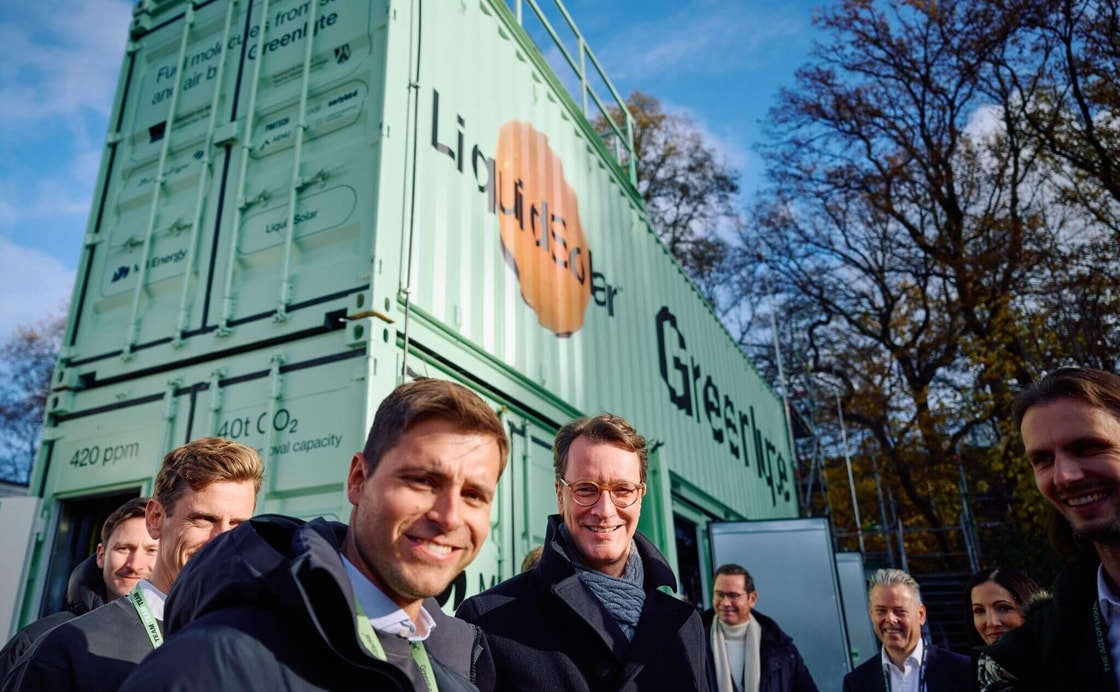
The demonstration uses Greenlyte’s fully electric, modular LiquidSolar system, which captures CO2, produces green hydrogen, converts both into syngas, and synthesises this into e-fuels such as synthetic natural gas, e-methanol, or sustainable aviation fuel (SAF) at “fossil-competitive costs.”
As a proof-of-concept facility, the company expects to produce up to five tonnes of synthetic natural gas (SNG) whilst also capturing 40 tonnes of CO2 per year.
Greenlyte says the plant went from engineering to inauguration in under 12 months, with final construction completed in less than three, supported by more than 13,000 hours of pilot operation.
The German start-up added that it can scale the system to much larger commercial plants.
Greenlyte is planning a larger e-methanol facility in Marl, Germany, by 2027, and wants to expand its operations internationally by 2030.
Long-term offtake agreements have also reportedly been signed with Eurowings and MB Energy, although the firm has not disclosed volumes or timelines.
Florian Hildebrand, CEO and co-founder of Greenlyte, claimed the LiquidSolar technology is “economically attractive for customers,” and offers “strong return opportunities for investors.”
The CEO added, “We are building the foundation for a competitive new energy industry by drawing on North Rhine-Westphalia’s industrial legacy, a world-class research ecosystem, and a dense supplier network – making optimal use of the great resources we have here.”
The region’s Minister President, Hendrik Wüst, said North Rhine-Westphalia aims to become “Europe’s first climate-neutral industrial region.”
With Uniper as an associated partner, the initiative received funding from the EU and the German state.
Greenlyte’s demonstration plant is another example of hydrogen being pulled back toward industrial, chemistry-based applications rather than energy use.
Synthetic methane and e-methanol are chemically familiar molecules that can be produced, stored, and sold under the same contract structures industrial gas companies have used for decades.
Analysis: What the industrial gas model means for hydrogen’s future
Industrial gas companies sit at the heart of the hydrogen value chain – and now face pivotal choices about their future. With decades of experience in hydrogen production, logistics, and safety, they’re arguably the best-positioned players to scale hydrogen. But they are also, by nature and necessity, risk-averse.
The traditional industrial gas model relies on long-term, take-or-pay contracts that deliver predictable returns on major infrastructure. It’s built for resilience, not speed or experimentation.
This structure was tested when investors ousted Air Products’ long-time CEO Seifi Ghasemi, who had positioned the company’s clean hydrogen investments as a play for “first mover advantages.” As more projects landed, cash reserves fell and debt climbed, diverging from the sector’s traditional risk posture.
His successor, Eduardo Menezes, announced a $3.1bn write-down as the company exited three US projects, including green hydrogen and sustainable aviation fuels.
H2 View subscribers can continue reading here.

